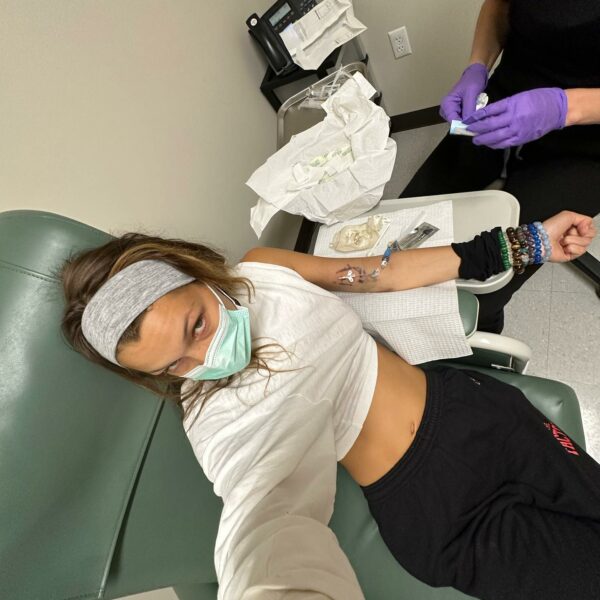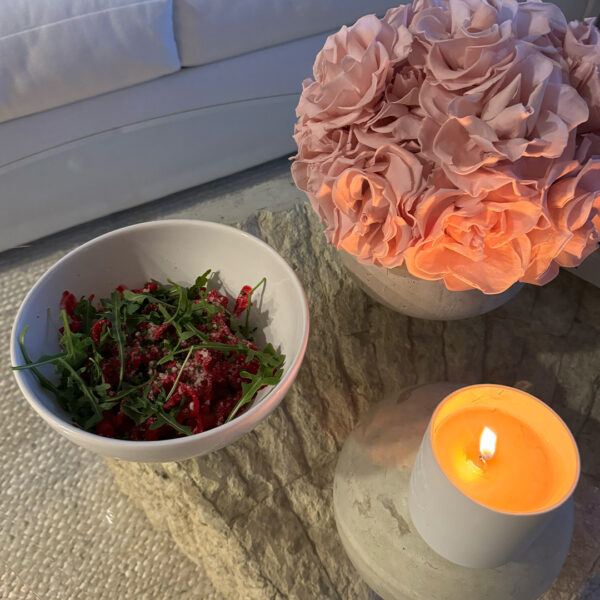As much as I hate to admit it, even with my plethora of products and access to doctors and treatments, I still struggle with breakouts—big time. I know I’m not alone, and there are definitely bigger issues in life than zits, but that doesn’t mean it’s not annoying.
Bottom line: the struggle is real, and if you’re someone who still breaks out, like me, then read on for the tips I’ve learned to help keep my skin semi-happy with significantly fewer breakouts.
If you’re doing everything right in terms of skin cleansing and correct product usage, then your problem is likely diet or hormones (or both). Learn what foods trigger breakouts by taking away known provokers, like sugar and dairy. For me, personally, sugar is my biggest culprit—and I have a sugar addiction (will save that for another post). When I eat processed sugar like candy and cookies and cake (oh my!), I’m guaranteed at least one zit by morning. So, is the sugar worth it? No, but I still eat it. Sigh.
Without fail, a week before my period, I always end up with a large pimple in some really obvious place on my face. For some reason, at the end of last summer, my hormones really went into freak-out mode, and I ended up with adult acne all over my jawline. It takes weeks—sometimes even a month—to go away. I don’t have a cut-and-dry solution to hormonal issues, but I do know, for me, visiting my doctor and getting on medicine that helps to regulate my hormone imbalance has significantly cleared up my skin. I still get the occasional pre-period zit, but nothing like what I used to have. I realize not everyone wants to take medicine, so think of this as a last resort, but personally, I am happy with my choice to deal with it medically.
Learn about the ingredients that trigger your skin. For me, vitamin C is a huge trigger. I don’t know why, but I always seem to get closed comedones when using a product with active vitamin C. Also, oils. Yes, I’m aware that acne-prone skin can benefit from oils, but there is definitely a purging time. For example, jojoba oil is touted as one of the best oils for combo/acne-prone skin, yet for it to regulate your sebum production, you will purge. If you’re not interested in going a few months with breakouts, steer clear. Educate yourself and know your skin by spot-treating areas with certain products before using them on your entire face.
There’s a huge beauty debate currently going on about fragrance and essential oils, which are often used in place of fragrance in healthy skin products. Some people say that both fragrance and essential oils disrupt the skin barrier. For those with sensitive skin, this can cause freak-outs, which means breakouts for those of us with acne-prone skin. I removed all fragrant products, including those with high levels of essential oils, from my skincare routine, and I noticed a huge difference in the milia and closed comedones. I recently gave a product line formulated with essential oils a try, and within two days, my cheeks and forehead were littered with tiny closed comedones. Again, know your skin and educate yourself on the ingredients. But to be safe, stay away from fragrance entirely.
This may seem like a no-brainer, but using a clean washcloth each time you wash your face is essential. You can buy in bulk on Amazon (12-pack for $16). Also, never rub your face dry—pat it dry so that you don’t spread bacteria.
I love a good hair oil as much as the next girl, but my skin doesn’t. Same with thick conditioners and post-wash leave-in moisturizing balms. My ends need hydration, but my skin gets mad … and then it tends to react with pimples (especially along the hairline if I’ve used a shampoo that is too moisturizing). A few tips here: first, when taking a shower, wash your face, back, and chest after you’ve shampooed and conditioned your hair. There’s also a new haircare line made specifically for people prone to acne. Seen is a dermatologist-designed hair line that won’t clog pores. Finally, and I swear by this tip, change your pillowcases every night so that product and bacteria don’t transfer from your hair to your face while you sleep. It seems annoying, but breaking out is definitely more frustrating. I opt for silk pillowcases for anti-aging reasons, but if you’re into cotton, that’s fine too.
I have friends who tell me they don’t use retinol, and I literally yell at them. Not only is it the best anti-aging ingredient, it’s also ideal for skin texture and tone and breakouts! Yes, retinol—especially prescription strength—has changed my skin and significantly reduced my comedones and blackheads. If you choose to use a retinol (and you should), I suggest finding one with little to no additional ingredients. Definitely make sure that retinol is at the top of the ingredient list—otherwise, it won’t work. Sometimes retinoids have mineral oil or other such pore-clogging ingredients to counteract the dryness of retinol. The trick is to build your skin up to once-a-night use. Start with twice a week, let your skin adjust, then go to three times a week, and so on. If you keep your nighttime routine simple (wash, moisturize, retinoid, eye cream), your should see a dramatic difference in one month to six weeks. I apply moisturizer before my retinoid because I use a prescription strength, and I want it to spread easily onto the skin. This has worked wonders for me—but find what works for you. Always use sunscreen when using a retinol (obviously, but just a reminder).





































